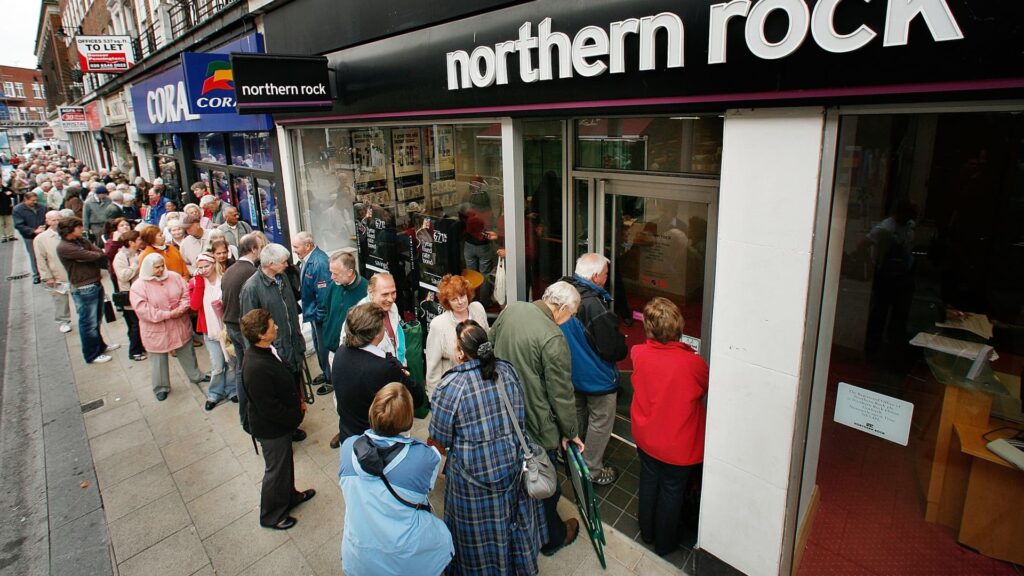It is “unlikely” that European banks will undergo anything as serious as in 2008, according to economists.
Peter Macdiarmid / Staff / Getty Images
LONDON — Turbulence across the banking sector has prompted the question of whether we are teetering on the edge of another financial crash, 2008-style. But a banking crisis today would look very different to 15 years ago thanks to social media, online banking, and huge shifts in regulation.
This is “the first bank crisis of the Twitter generation,” Paul Donovan, chief economist at UBS Global Wealth Management, told CNBC earlier this month, in reference to the collapse of Credit Suisse.
Shares of Credit Suisse dropped on March 14 after “material weaknesses” were found in its financial reporting. The news started a tumultuous five days for the lender, which culminated in rival Swiss bank UBS agreeing to take over the beleaguered firm.
“What social media has done is increase the importance of reputation, perhaps exponentially, and that’s part of this problem I think,” Donavan added.
Social media gives “more scope for damaging rumours to spread” compared to 2008, Jon Danielsson, director of the Systemic Risk Centre at the London School of Economics, told CNBC in an email.
“The increased use of the Internet and social media, digital banking and the like, all work to make the financial system more fragile than it otherwise would be,” Danielsson said.
Social media not only allows rumors to spread more easily, but also much faster.
“It’s a complete gamechanger,” Jane Fraser, Citi CEO, said at an event hosted by The Economic Club of Washington, D.C., last week.
“There are a couple of tweets and then this thing [the collapse of Silicon Valley Bank] went down much faster than has happened in history,” Fraser added.
Regulators shuttered Silicon Valley Bank on March 10 in what was the biggest U.S. bank collapse since the global financial crisis in 2008.
While information can spread within seconds, money can now be withdrawn just as quickly….
Read the full article here





